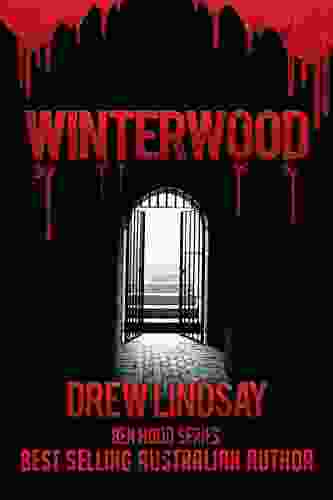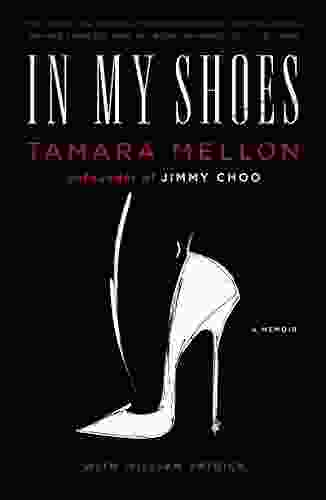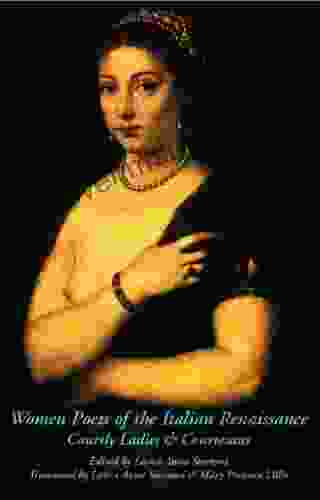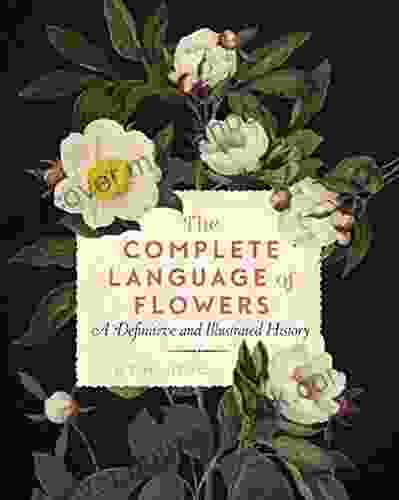Courtly Ladies and Courtesans: A Poetic Exploration of Duality

4.9 out of 5
| Language | : | English |
| File size | : | 698 KB |
| Text-to-Speech | : | Enabled |
| Screen Reader | : | Supported |
| Enhanced typesetting | : | Enabled |
| Print length | : | 302 pages |
| Lending | : | Enabled |
In the tapestry of medieval literature, the figures of courtly ladies and courtesans stand as intriguing and multifaceted representations of the complex social norms and gender roles that shaped the era. Through the medium of dual language poetry, where the interplay of different tongues enriches the expression of emotions and experiences, we can delve into the duality of these archetypes, exploring their contrasting and intersecting roles within the societal landscape.
The Courtly Lady: Idealized Nobility and Virtue
The courtly lady, often depicted in courtly love literature, epitomized the ideals of nobility, purity, and inaccessible beauty. Her ethereal grace inspired the knight's unwavering devotion and chivalrous aspirations. In the poetry of the time, she was often portrayed as a distant, unattainable figure, a symbol of refinement and unattainable desire.
In the dual language poetry of the period, the courtly lady's virtues were often contrasted with those of the courtesan. For instance, in the Occitan poem "Belhs Cavaliers" (c. 1180),the troubadour Peire Vidal juxtaposes the courtly lady's "virtuous ways" with the courtesan's "shameless acts." Such comparisons highlighted the stark divisions between the two societal roles, emphasizing the courtly lady's elevated status as a paragon of virtue.
The Courtesan: A Symbol of Desire and Liberation
In contrast to the courtly lady's idealized purity, the courtesan represented the realm of desire, sensuality, and female agency. In the literature of the era, she was often depicted as a worldly and independent woman, free from the societal constraints that bound the courtly lady. Her presence in dual language poetry challenged the rigid social norms, offering a glimpse into the hidden lives and experiences of medieval women.
The courtesan's voice is particularly evident in the songs and poems of the troubadours and trouvères. In the Provençal song "Ailas, per qu'ieu no fui!" (c. 1140),the courtesan complains of her unrequited love for a nobleman, expressing her desires and frustrations in a frank and passionate manner. Such expressions of female agency were rare in the literature of the time, highlighting the unique space that courtesans occupied as both objects of desire and independent beings.
The Interplay of Languages: Revealing Hidden Truths
The use of dual language in poetry allowed for a deeper exploration of the duality between courtly ladies and courtesans. By juxtaposing the elevated language of courtly love with the more vernacular language of the courtesans' songs, poets created a linguistic tension that mirrored the societal divide between the two archetypes.
In the poem "Quant j'ai mon cuer" (c. 1170),the troubadour Marcabru uses the juxtaposition of Occitan and French to highlight the contrast between the courtly lady's unattainability and the courtesan's availability. The Occitan stanzas, addressed to the courtly lady, are filled with lofty language and courtly conventions. The French stanzas, on the other hand, addressed to the courtesan, are more direct and sensual, reflecting the courtesan's world of desire and experience.
Historical Context: Reflecting Societal Norms
The duality between courtly ladies and courtesans was not merely a literary construct but a reflection of the complex social norms and realities of the medieval era. The idealization of the courtly lady served to maintain the rigid social hierarchy and reinforce the patriarchal structure of society. The courtesan, on the other hand, represented the marginalized and often exploited underbelly of medieval society.
The dual language poetry of the period provides a valuable glimpse into these societal dynamics. By giving voice to both the courtly lady and the courtesan, poets challenged the established norms, offering a more nuanced understanding of female roles and experiences.
: Enduring Legacy and Contemporary Relevance
The duality between courtly ladies and courtesans remains a potent theme in literature and art, transcending the boundaries of the medieval era. The exploration of this duality continues to resonate with contemporary audiences, inviting us to question social norms, gender roles, and the complex interplay between desire, virtue, and agency.
In the dual language poetry of the medieval period, we find a rich and enduring literary tradition that sheds light on the hidden lives and experiences of women. By delving into the duality of courtly ladies and courtesans, we gain a deeper understanding of the complexities of medieval society and the enduring power of poetry to explore the human condition.
4.9 out of 5
| Language | : | English |
| File size | : | 698 KB |
| Text-to-Speech | : | Enabled |
| Screen Reader | : | Supported |
| Enhanced typesetting | : | Enabled |
| Print length | : | 302 pages |
| Lending | : | Enabled |
Do you want to contribute by writing guest posts on this blog?
Please contact us and send us a resume of previous articles that you have written.
 Top Book
Top Book Novel
Novel Fiction
Fiction Nonfiction
Nonfiction Literature
Literature Paperback
Paperback Hardcover
Hardcover E-book
E-book Audiobook
Audiobook Bestseller
Bestseller Classic
Classic Mystery
Mystery Thriller
Thriller Romance
Romance Fantasy
Fantasy Science Fiction
Science Fiction Biography
Biography Memoir
Memoir Autobiography
Autobiography Poetry
Poetry Drama
Drama Historical Fiction
Historical Fiction Self-help
Self-help Young Adult
Young Adult Childrens Books
Childrens Books Graphic Novel
Graphic Novel Anthology
Anthology Series
Series Encyclopedia
Encyclopedia Reference
Reference Guidebook
Guidebook Textbook
Textbook Workbook
Workbook Journal
Journal Diary
Diary Manuscript
Manuscript Folio
Folio Pulp Fiction
Pulp Fiction Short Stories
Short Stories Fairy Tales
Fairy Tales Fables
Fables Mythology
Mythology Philosophy
Philosophy Religion
Religion Spirituality
Spirituality Essays
Essays Critique
Critique Commentary
Commentary Glossary
Glossary Bibliography
Bibliography Index
Index Table of Contents
Table of Contents Preface
Preface Introduction
Introduction Foreword
Foreword Afterword
Afterword Appendices
Appendices Annotations
Annotations Footnotes
Footnotes Epilogue
Epilogue Prologue
Prologue Carlotta Gall
Carlotta Gall Camila Hurst
Camila Hurst Ondrej Sarek
Ondrej Sarek Michael Ford
Michael Ford Jennifer Chiaverini
Jennifer Chiaverini Jamie Sumner
Jamie Sumner David G Schwartz
David G Schwartz David W Blight
David W Blight Tom Hall
Tom Hall Chris Portie
Chris Portie James Byrne
James Byrne Les Dale
Les Dale S Theresa Dietz
S Theresa Dietz Ori Menashe
Ori Menashe Douglas Fairbanks
Douglas Fairbanks Daniele Vacca
Daniele Vacca Nl Herzenberg
Nl Herzenberg Mac Fortner
Mac Fortner Stephen Crane
Stephen Crane Sheila Scobba Banning
Sheila Scobba Banning
Light bulbAdvertise smarter! Our strategic ad space ensures maximum exposure. Reserve your spot today!

 Elias MitchellHow To Build An Inexpensive Chicken Feeder: A Step-by-Step Guide With Visuals
Elias MitchellHow To Build An Inexpensive Chicken Feeder: A Step-by-Step Guide With Visuals
 Natsume SōsekiThis Will Transform Your Life: Learn How to Make Money from Home with Very...
Natsume SōsekiThis Will Transform Your Life: Learn How to Make Money from Home with Very... Andy ColeFollow ·16.5k
Andy ColeFollow ·16.5k Denzel HayesFollow ·6.6k
Denzel HayesFollow ·6.6k Melvin BlairFollow ·19.9k
Melvin BlairFollow ·19.9k Eugene PowellFollow ·13.2k
Eugene PowellFollow ·13.2k John SteinbeckFollow ·7.4k
John SteinbeckFollow ·7.4k Patrick RothfussFollow ·16.8k
Patrick RothfussFollow ·16.8k Wesley ReedFollow ·10k
Wesley ReedFollow ·10k Roald DahlFollow ·13k
Roald DahlFollow ·13k

 Eugene Powell
Eugene PowellComplete Guide to Using Yoga With Kids: Benefits, Tips,...
Yoga is an ancient practice that has been...

 Benji Powell
Benji PowellHow to Make $000 Per Week on Craigslist
Are you looking for a way to make extra money...

 Gabriel Garcia Marquez
Gabriel Garcia MarquezGrocery Row Gardening: The Exciting New Permaculture...
Kick-start your gardening journey with the...

 Hayden Mitchell
Hayden MitchellUnveiling the Gripping World of Winterwood: Ben Hood...
In the annals of crime thrillers, the...

 E.M. Forster
E.M. ForsterThe Financial Advisor Guide To Managing and Investing...
As a financial...

 Lee Simmons
Lee SimmonsIn My Shoes Memoir: A Poignant Journey of Resilience,...
In the tapestry of life, adversity often...
4.9 out of 5
| Language | : | English |
| File size | : | 698 KB |
| Text-to-Speech | : | Enabled |
| Screen Reader | : | Supported |
| Enhanced typesetting | : | Enabled |
| Print length | : | 302 pages |
| Lending | : | Enabled |








